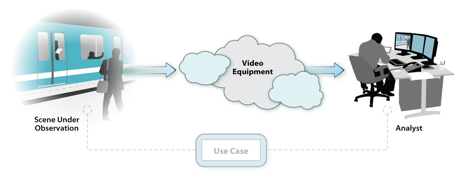VQiPS: Use Cases
Guide to Defining Video Quality Requirements
Select:
| Getting Started | Use Cases | Use Classes | GUC Aspects | GUC Questionnaire | GUC Example | Video System Tasks | Video System Functions | Recommendations Tool | Acknowledgments |

Use Cases
The first step to getting the video quality you need is to clearly define your functional requirements, or use case. At the most basic level this depends on the answers to only two questions:
- What is in the scene of interest, or scene content?
- What is the task to accomplish from viewing that scene?
The answers to these questions define the use case. All public safety video systems must present a scene of interest to a viewer in sufficient detail for the viewer to make a decision or perform a task based on recognition of what is happening in the scene. For example, the video quality must allow a viewer performing surveillance analysis to read the characters in a license plate or determine the identities of individuals at a local convenience store.

Video equipment performance requirements depend on the specific use case. A use case considers the scene captured by the video system and the task performed by the viewer, or analyst. The preceding figure shows a use case in which an agency has installed video cameras at a train station. In this instance, the scene content comprises the platform, the train (when it is in the station), and the individuals on the platform. The analyst views the scene through the video apparatus and alerts public safety officials if something is awry. The video quality must be sufficient, for example, for the analyst to positively identify people standing on the platform.
After you have identified several use cases, you can generalize those with similar requirements to form use classes from which to more easily develop video system specifications.
Created September 28, 2016, Updated August 6, 2024

